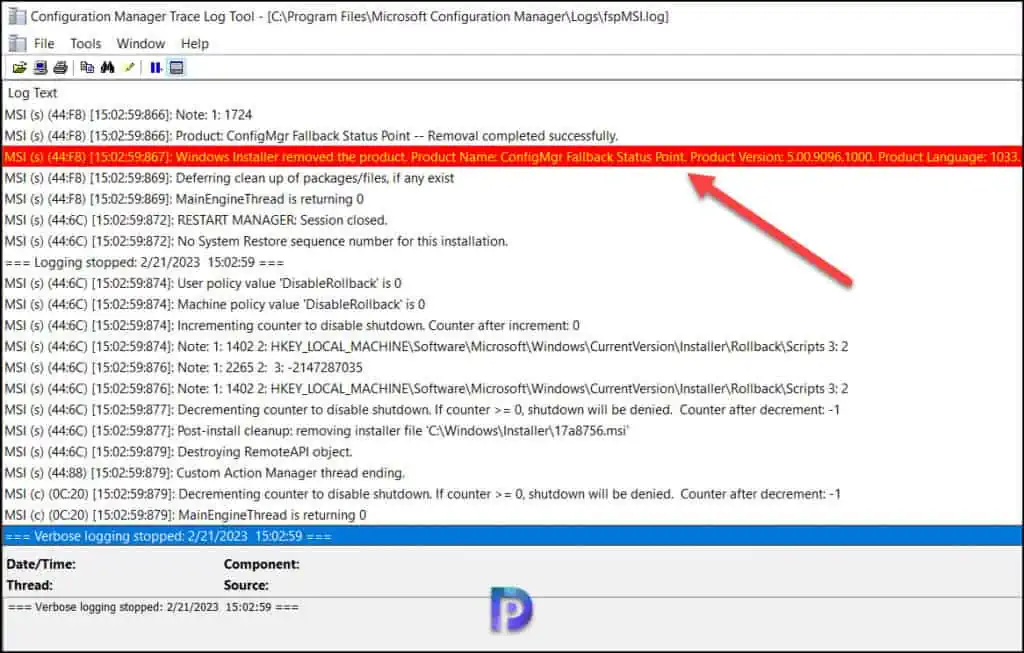2 Ways to Uninstall or Remove SCCM Fallback Status Point Role
In this post, I will show you how to uninstall or remove SCCM fallback status point role. You can get rid of the fallback status point role in ConfigMgr by using a console command or a PowerShell command.
In my previous post, I showed you how to install fallback status point in SCCM. With a FSP role in ConfigMgr, you can monitor client deployment for Windows computers and find clients that can’t talk to a management point and are therefore not managed.
Although the fallback status point is useful, it comes with security risks. The fallback status point role always communicates with clients over HTTP, which uses unauthenticated connections and sends data in clear text. This makes the fallback status point easy to attack, especially when it is used with internet-based client management.
We will use two different ways to remove the fallback status point role in ConfigMgr:
- Using the Remove-CMFallbackStatusPoint PowerShell command.
- Remove FSP role using Servers and Site System Roles in console.
Steps to Remove SCCM Fallback Status Point Role
You can uninstall the fallback status point role from the Configuration Manager console using the following steps:
- In the ConfigMgr console, navigate to Administration > Site Configuration > Servers and Site System Roles.
- Right-click your Site System installed with fallback status point role and select Remove Role.

Are you sure that you want to remove the selected role “Fallback Status Point” from Server? Select Yes to confirm the FSP role removal.

To verify & troubleshoot the removal of the Fallback Status Point, you can review the fspMSI.log. The fspMSI.log on the SCCM server records the installation or uninstallation of fallback status point role. Take a look at all the SCCM FSP log files.

The following lines from the fspMSI.log confirms the successful uninstallation of fallback status point role in SCCM.
Product: ConfigMgr Fallback Status Point – Removal completed successfully. Windows Installer removed the product. Product Name: ConfigMgr Fallback Status Point. Product Version: 5.00.9096.1000. Product Language: 1033. Manufacturer: Microsoft Corporation. Removal success or error status: 0.
Uninstall SCCM Fallback Status Point Role using PowerShell
The Remove-CMFallbackStatusPoint cmdlet removes a specified fallback status point site system role from Configuration Manager site. More details about the Remove-CMFallbackStatusPoint cmdlet and its parameters can be found on Microsoft site.
Additionally, you can specify the site system name and site code for a fallback status point or use the Get-CMFallbackStatusPoint cmdlet to obtain a fallback status point object.
Launch the Configuration Manager console and connect via Windows PowerShell. You’ll find this option when you select the blue arrow in the top-left corner of the console. You may be asked to update the modules when you start PowerShell or the PowerShell ISE from the Configuration Manager console.
The first PowerShell command that you’ll run is Get-CMFallbackstatuspoint. The Get-CMFallbackStatusPoint cmdlet gets a fallback status point site server role. This command identifies whether a server is running FSP role. You can get fallback status point for a site system name or a site code or both. After running this command, in the output, we see the server is installed with SMS fallback status point role.
Get-CMFallbackstatuspoint

Next, run the below PowerShell command that removes the fallback status point for the site with the site code MCM and the system name corpcm.prajwal.local.
Remove-CMFallbackStatusPoint -SiteCode "MCM" -SiteSystemServerName "corpcm.prajwal.local"
After uninstalling the FSP role, you can run the command “Get-CMFallbackstatuspoint” to determine if the fallback status point role exists, and now we see the output is blank. This confirms that we have successfully removed the fallback status point role using PowerShell.

